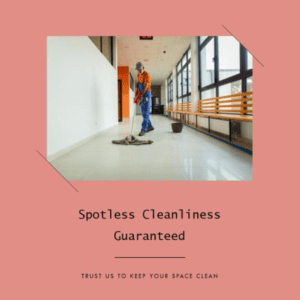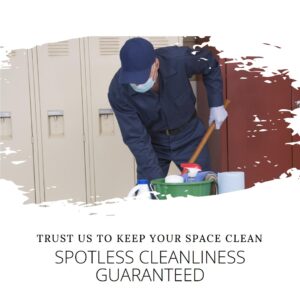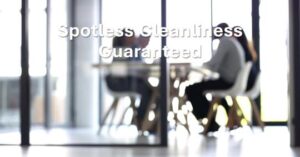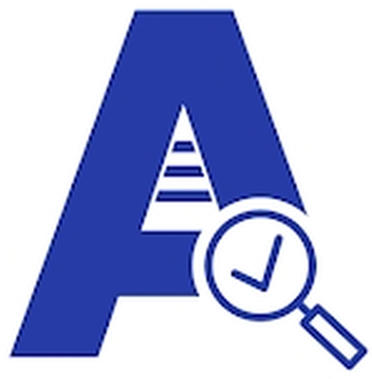Custodial Inspection Checklist
The overarching goal of custodial inspection is to maintain cleanliness, safety, and quality in custodial facilities and operations.

The main purpose of a custodial inspection is to:
- Standardize the custodial inspection and evaluation process, providing a useful mechanism for custodial management.
- Ensure that custodial facilities are being properly maintained and that detainees/prisoners are being humanely cared for.
- Inspect and monitor the custodial services provided by contractors to ensure quality and compliance with contracts.
- Conduct quality control checks on custodial operations, with a focus on key areas like the custodial closet, office, and storage spaces.
- Verify compliance with cleaning standards and procedures on a regular basis, typically by onsite supervisors or lead workers.
Custodial inspection helps identify issues, drive continuous improvement, and ensure customer/client satisfaction.
Key best practices for conducting effective custodial inspections:
- Use a Comprehensive Custodial Inspection Checklist: Inspectors should have a detailed checklist or protocol that covers all relevant areas, including the custodial closet, equipment, and facility spaces. This ensures a thorough and consistent evaluation.
- Maintain Consistency: The inspection process should be conducted using the same procedures and criteria each time, enabling the identification of trends and reliable data-driven decision making.
- Ensure Accuracy: Inspectors should use reliable data collection methods, such as calibrated instruments and measurement tools, to gather accurate information about the conditions being evaluated.
- Document Thoroughly: Clear and detailed records should be maintained, including the date, areas covered, findings, corrective actions, and any follow-up activities. This documentation serves as a reference and demonstrates compliance.
- Implement a Robust Follow-up Process: Inspections should not end with the identification of issues. There should be a structured process to ensure that any problems are addressed and resolved in a timely manner.
- Emphasize Communication: Effective inspections involve clear and timely communication with custodians, supervisors, and other stakeholders. This helps create awareness, reinforce protocols, and encourage collaboration.
- Prioritize the Custodial Closet and Storage Areas: These spaces should be a top priority during inspections, as their condition can signal the overall quality of custodial services.
- Assign Accountability: Assigning specific custodians to different areas, potentially on a rotating basis, helps establish clear responsibility and accountability.
By incorporating these best practices, organizations can conduct thorough and effective custodial inspections that drive continuous improvement, ensure compliance, and maintain high-quality custodial services.

Summary of the key elements that should be included in a custodial inspection checklist:
Custodial Closet Inspection
- Is the assigned custodial closet clean and organized?
- Are approved chemicals stocked and are there any unapproved chemicals stored?
- Is the vacuum bag empty and is the vacuum condition clean and working?
- Is the cart equipment correct and organized?
- Are the cart cloths and mops in proper order and volume for the assigned route?
Equipment Inspection
- Is all equipment cleaned and stored neatly?
- Is all equipment free of defects?
Facility Inspection
- Are the walls, doors/frames, and floors clean?
- Is the trash container clean?
- Is the recycling container clean?
- Are the cabinet tops, drawer faces, and sinks clean?
- Is the room overall clean and neat?
Safety Checklist
- Are fire drills conducted regularly?
- Exits and emergency preparedness measures adequate?
- Are electrical outlets, switches, and cords in good condition?
- Is ladder, lockout/tagout, and roof safety training provided to custodial staff?
- Are aisles and walkways unobstructed?
The overall goal of the custodial inspection checklist is to ensure the cleanliness, organization, and safety of the custodial spaces and operations.

Key points about conducting custodial inspections using eAuditor Audits & Inspections:
Mobile Inspection using eAuditor Audits & Inspections streamlines the Process:
-
- eAuditor Audits & Inspections allows custodians and inspectors to use mobile devices to conduct digital, paperless inspections.
- eAuditor Audits & Inspections provides features like customizable checklists, GPS tracking, automated reporting, and work order management to improve efficiency and documentation.
Benefits of Mobile Inspections using eAuditor Audits & Inspections:
-
- Real-time data collection and instant reporting eliminate delays associated with manual processes.
- GPS tracking enhances accountability by verifying inspector locations and activities.
- Digitized inspections make it easier to track performance, identify trends, and drive continuous improvement.
Comprehensive Checklists and Customization:
-
- eAuditor Audits & Inspections offers detailed checklists covering the custodial closet, equipment, facility spaces, and safety protocols.
- The checklists and inspection criteria can be customized to meet the specific needs of each facility or organization.
Improved Reporting and Corrective Action:
-
- Digital documentation and automated reporting enable faster identification and resolution of issues.
- This helps maintain high standards of cleanliness, safety, and compliance in custodial operations.
In summary, the use of eAuditor Audits & Inspections app has become a best practice for conducting efficient, effective, and accountable custodial inspections across various industries and facilities.


